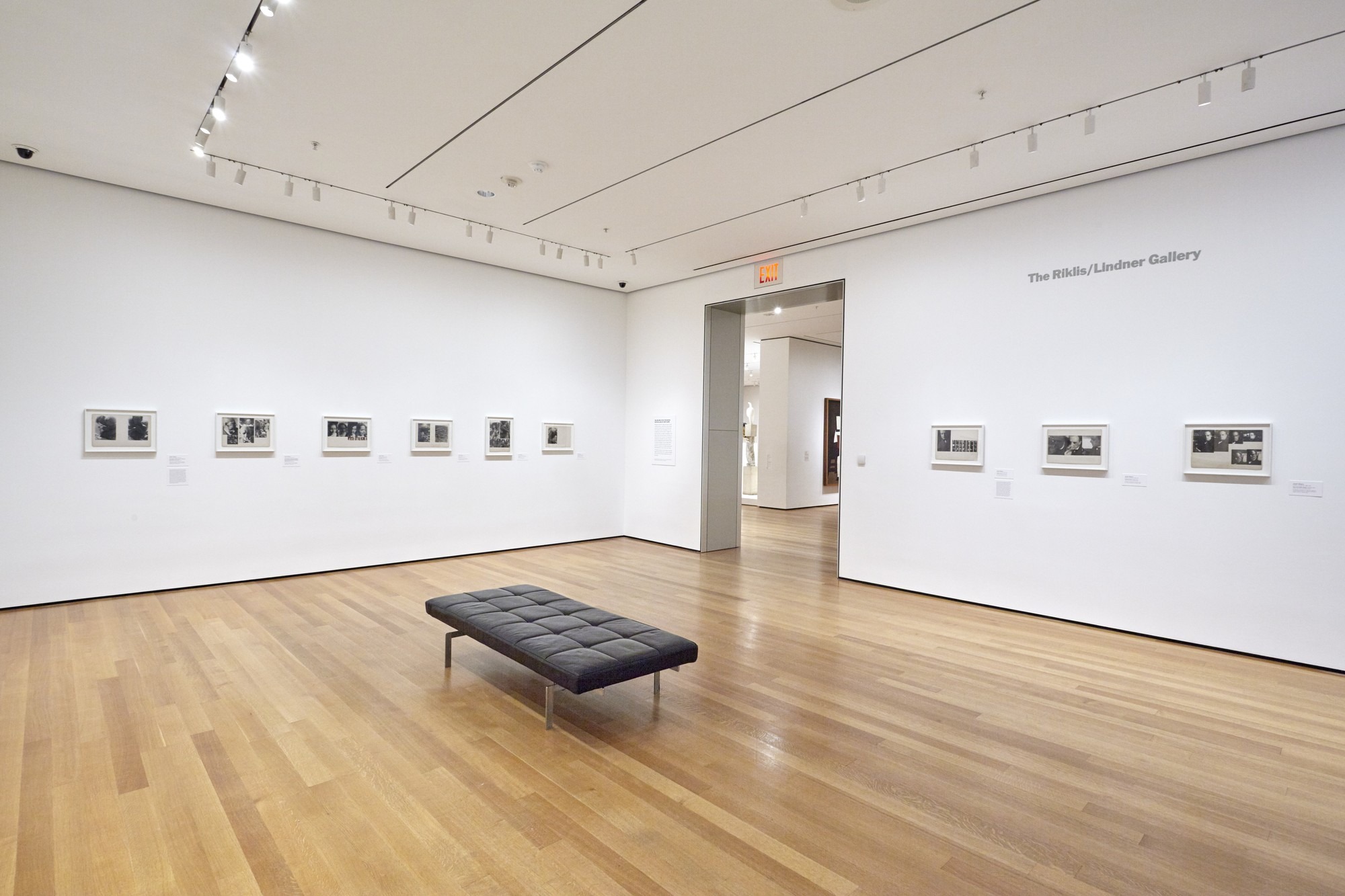One and One Is Four
The Bauhaus Photocollages of Josef Albers
23 Nov 2016 - 02 Apr 2017

Installation view of the exhibition, "One and One Is Four: The Bauhaus Photocollages of Josef Albers"
November 23, 2016–April 02, 2017. IN2368.2. Photograph by Robert Gerhardt
November 23, 2016–April 02, 2017. IN2368.2. Photograph by Robert Gerhardt
Josef Albers (American, born Germany, 1888–1976) is a central figure in 20th-century art, both as a practitioner and as a teacher at the Bauhaus, Black Mountain College, and Yale University. Best known for his iconic series Homages to the Square, Albers made paintings, drawings, and prints and designed furniture and typography. The least familiar aspect of his extraordinary career is his inventive engagement with photography, which was only discovered after his death. The highlight of this work is undoubtedly the photocollages featuring photographs he made at the Bauhaus between 1928 and 1932. At once expansive and restrained, this remarkable body of work anticipates concerns that Albers would pursue throughout his career: seriality, perception, and the relationship between handcraft and mechanical production.
The first serious exploration of Albers’s photographic practice occurred in a modest exhibition at MoMA in 1988, The Photographs of Josef Albers. In 2015, the Museum acquired 10 photocollages by Albers—adding to the two donated by the Josef and Anni Albers Foundation almost three decades ago—making its collection the most significant anywhere outside the Foundation. This installation celebrates both this landmark acquisition and the publication of One and One Is Four: The Bauhaus Photocollages of Josef Albers, which focuses exclusively on this deeply personal and inventive aspect of Albers’s work and makes many of these photocollages available for the first time.
Organized by Sarah Hermanson Meister, Curator, with Kristen Gaylord, Beaumont and Nancy Newhall Curatorial Fellow, Department of Photography.
The first serious exploration of Albers’s photographic practice occurred in a modest exhibition at MoMA in 1988, The Photographs of Josef Albers. In 2015, the Museum acquired 10 photocollages by Albers—adding to the two donated by the Josef and Anni Albers Foundation almost three decades ago—making its collection the most significant anywhere outside the Foundation. This installation celebrates both this landmark acquisition and the publication of One and One Is Four: The Bauhaus Photocollages of Josef Albers, which focuses exclusively on this deeply personal and inventive aspect of Albers’s work and makes many of these photocollages available for the first time.
Organized by Sarah Hermanson Meister, Curator, with Kristen Gaylord, Beaumont and Nancy Newhall Curatorial Fellow, Department of Photography.
